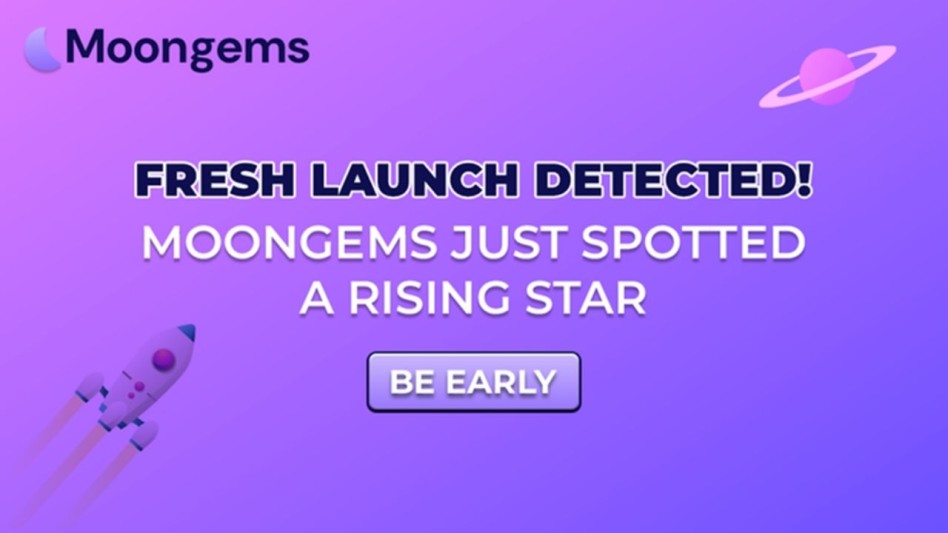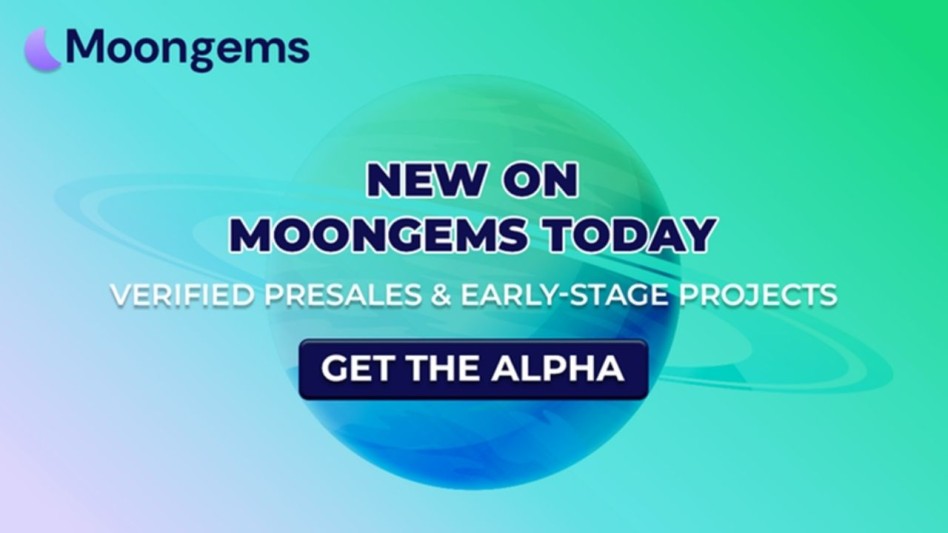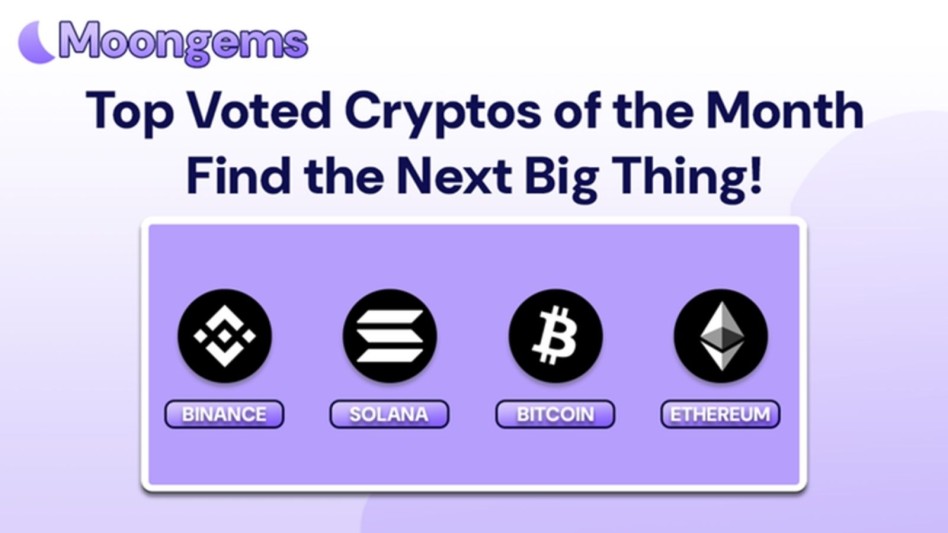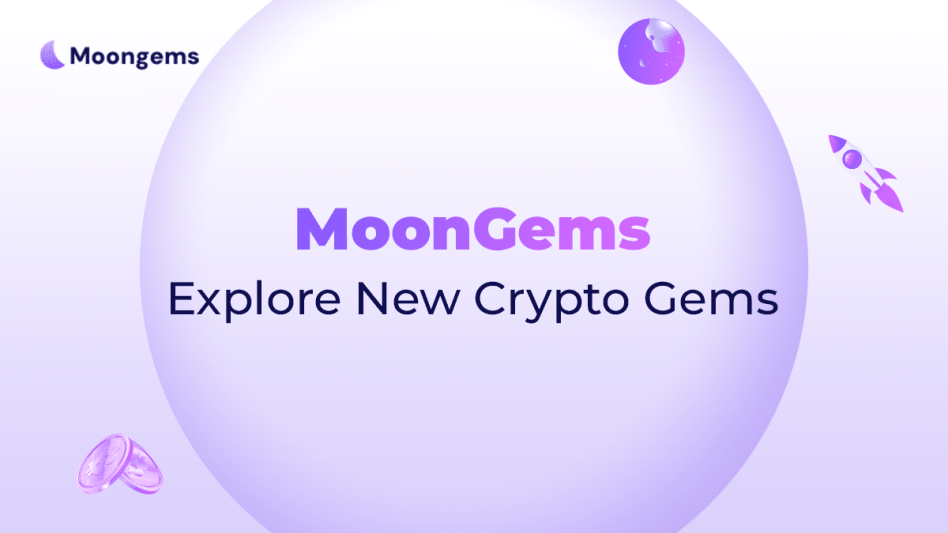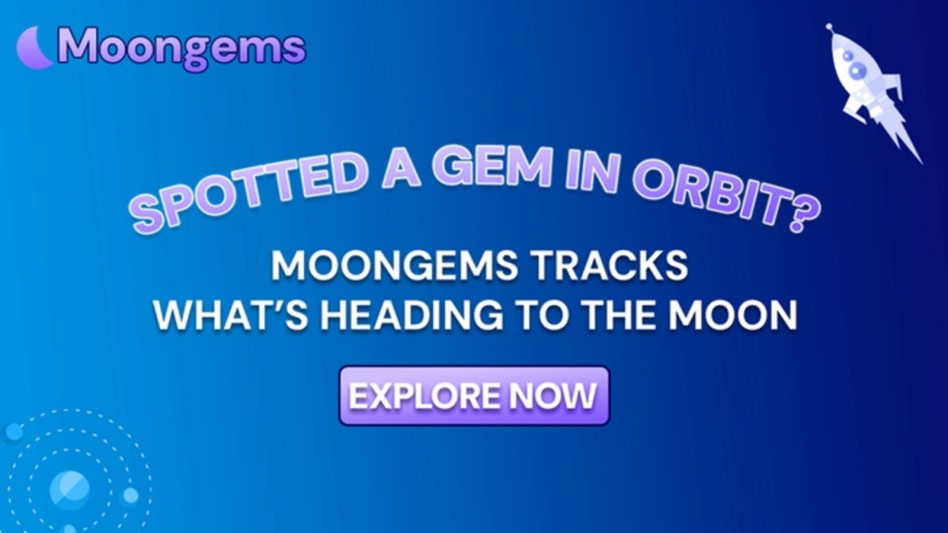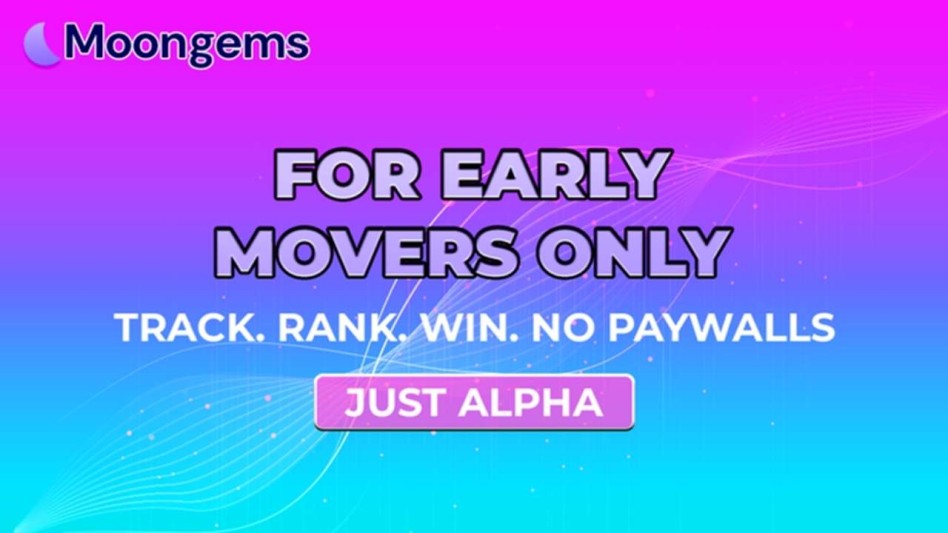Author: Jawad Hussain – Crypto Analyst & Web3 Researcher | 9+ years tracking presales, IDOs, and token launches. Follow him on Twitter
If you’ve ever looked at a new token that pumped 20x overnight and thought, “I wish I got in earlier,” then you already understand the value of a crypto launchpad. These platforms give investors like you early access to promising crypto projects — before they hit public exchanges.
In this detailed guide, we’ll cover exactly what a crypto launchpad is, how it works, and how you can use it to access early-stage crypto investments in 2025. You'll also learn how to get whitelisted for crypto presales, avoid scams, and uncover hidden gems before the market does.
What Is a Crypto Launchpad?
A crypto launchpad, also called an IDO platform or token launch platform, is a gateway for new cryptocurrency projects to raise capital by selling their tokens before a public launch. For investors, it’s the best chance to get in early — often at the lowest price available. Think of it as the crypto version of angel investing.
Launchpads serve a critical function in the Web3 ecosystem. They allow promising startups to access funding while building a supportive community of early users. In return, early investors gain access to potentially high-growth tokens before the wider market.
For example, projects like Polygon (MATIC) and Avalanche (AVAX) started out as launchpad offerings. Today, they sit in the top 20 by market cap — rewarding early believers with exponential returns.
But there’s a catch: Not every launchpad project is a winner. That’s why you need to understand how these platforms work and how to spot the legit ones from the rug pulls.
How Do Crypto Launchpads Work? (Step-by-Step Breakdown)
Let’s walk through how a typical launchpad process works from start to finish.
1. Project Application & Vetting
New crypto projects submit detailed proposals to launchpads, including whitepapers, tokenomics, roadmaps, audits, and KYC information. Top-tier launchpads only approve projects that pass strict due diligence.
2. Launchpad Approves the Project
If accepted, the launchpad provides support in marketing, smart contract deployment, and investor onboarding. This step also involves announcing the presale or IDO timeline.
3. Whitelist Period Opens
To participate, investors often need to join a crypto presale whitelist by completing tasks (more on that below). Launchpads may use a tiered system based on token holdings or community contributions.
4. Token Sale (Presale or IDO)
Once the whitelist closes, whitelisted wallets can buy tokens during the live sale. This is typically done using ETH, BNB, or stablecoins like USDT.
5. TGE (Token Generation Event)
At the end of the sale, the tokens are minted and distributed to buyers. Some tokens are fully released; others follow a vesting schedule.
6. DEX or CEX Listing
Finally, the token goes live on platforms like Uniswap, PancakeSwap, or Binance. Prices often surge due to limited supply and increased demand.
The earlier you join this process, the better your potential entry — but only if the tokenomics are sound and the team is legit.
Key Features of a Good Crypto Launchpad
When choosing where to participate, always review these core features:
KYC Compliance
Reputable launchpads often require identity verification to reduce fraud and comply with global regulations. While not ideal for anonymity lovers, KYC gives confidence to serious investors.
Whitelist Access
Access to most presales is limited to whitelisted wallets. To get on the whitelist, you may need to complete social tasks, hold native tokens, or stake assets. This keeps bots out and rewards committed community members.
Tiered Participation System
Many platforms assign allocation tiers. For instance, staking more launchpad tokens (like POLS or DAO) gives you higher purchasing limits. Others reward early Discord participation.
Transparent Tokenomics
Good launchpads demand complete transparency. You should always be able to view token allocation, vesting schedules, and use cases before investing.
Community Activity
Projects that engage actively on Discord, Telegram, and X (Twitter) show a healthy feedback loop. No engagement = no growth = no real investor safety.
These features work together to give you a safer and more informed investment experience.
Types of Crypto Launchpads: Centralized vs Decentralized
Crypto launchpads come in two major flavors — and both have pros and cons.
Centralized Launchpads
Examples: Binance Launchpad, KuCoin Spotlight
These are run by major exchanges. They offer strong vetting, access to large investor pools, and usually require holding the exchange’s token (e.g., BNB). Pros include liquidity and trust. Cons? Higher barriers to entry and limited project diversity.
Decentralized Launchpads
Examples: Polkastarter, TrustPad, DAO Maker
These operate on blockchains like Ethereum or BNB Chain and give anyone with a wallet the chance to participate. Entry is often task-based or token-holding based. The upside is accessibility; the downside is less rigorous project filtering.
Ultimately, it’s about risk vs reward. Beginners may prefer centralized platforms. Seasoned investors often look to decentralized launchpads for hidden gems and greater upside potential.
Benefits of Using a Crypto Launchpad (Explained)
Crypto launchpads offer unique advantages that make them one of the best gateways into early-stage investing — especially for those looking to catch projects before they hit mainstream exchanges. Below are the top benefits of using a launchpad, each explained in depth.
1. Access to Discounted Token Prices
One of the most appealing benefits of crypto launchpads is the ability to purchase tokens at pre-market prices. These prices are often significantly lower than what the token will trade at after launch. This means early investors can secure tokens at a fraction of their future value, often resulting in multiples of ROI if the project gains traction post-listing.
2. Early Entry Into Promising Projects
Launchpads allow you to be part of a project’s journey from the ground floor. You get a front-row seat to the development, community-building, and token release process. This level of early access is not just about financial opportunity; it’s also about shaping the direction of the project as an early supporter.
3. Exposure to Curated, Vetted Projects
Reputable launchpads vet projects before hosting them. This includes reviewing the team, whitepaper, tokenomics, security audits, and roadmap. While it's not a guarantee against failure, it's a valuable filter that reduces your exposure to scams and low-effort launches.
4. Community and Network Effects
Joining a launchpad project often means entering a vibrant, growing community. You’ll find Telegram groups, Discord channels, and governance forums filled with other early adopters. These networks can offer insights, early updates, and partnership opportunities for other Web3 initiatives.
5. Fair Allocation Models
Many launchpads use tiered or lottery-based systems to ensure more equitable token distribution. Rather than whales scooping up the entire supply, these systems make sure smaller investors have access to quality presales too — especially when using whitelist access 2025 strategies.
6. Built-In Tools and Support
Some launchpads offer dashboards to track token unlocks, live staking metrics, and project milestones. These tools help you monitor your investment and make smarter decisions during TGE or post-launch trading windows.
Crypto launchpads are, quite literally, launching pads for opportunity — but only when paired with smart decision-making, proper due diligence, and secure wallet practices.
Risks and Red Flags to Watch in Crypto Launchpads
While crypto launchpads offer exciting opportunities for early access to promising tokens, they also come with significant risks. As the saying goes in crypto, “high rewards come with high risks.” Here are the most common red flags and risk factors you should look out for when evaluating a launchpad project or platform.
1. Lack of Token Utility
One of the most glaring red flags is when a token has no real-world utility. If the only purpose of the token is to be bought and sold for profit, it likely lacks long-term sustainability. Tokens should have a role in the project’s ecosystem — such as staking, governance, or powering decentralized applications.
Projects without a clear utility are often pump-and-dump schemes, driven by speculative hype rather than actual use. Before investing, ask: “What value does this token create for users beyond price action?”
2. Unrealistic Roadmaps and Promises
Be cautious of projects that promise too much too soon. If a new project is claiming it will revolutionize DeFi, launch on five blockchains, partner with Coinbase, and reach a billion-dollar market cap in 90 days — run the other way.
A legitimate crypto project has a clear, staged roadmap that aligns with realistic development timelines. Look for:
- MVP or working product demonstrations
- Reasonable fundraising goals
- Long-term development plans (6–24 months)
If everything looks like a moonshot in the next few weeks, it’s probably a marketing ploy designed to lure in uninformed investors.
3. Anonymous Teams with No Track Record
Many crypto scams hide behind anonymous developer teams. While anonymity is a norm in some parts of Web3, it becomes risky when there’s no transparency, no KYC, and no verifiable experience.
Ask these questions:
- Has the team built or scaled other successful projects?
- Are their LinkedIn or GitHub profiles available?
- Have they done a KYC or been featured on trusted sites like CoinTelegraph or Binance Research?
A public team with a proven history dramatically reduces the likelihood of a rug pull.
4. No Smart Contract Audit
Never invest in a project that hasn't completed a third-party audit of its smart contracts. Audits identify vulnerabilities in the token code — bugs that could allow hackers to drain funds or give insiders unfair advantages.
Trusted audit firms include:
- CertiK
- Hacken
- Solidity Finance
- SlowMist
If the project claims “audit pending,” wait until it’s complete and publicly accessible before jumping in.
5. Zero Vesting or Unlock Schedule
Projects with 100% token unlock at TGE (Token Generation Event) are a major red flag. This means insiders and early buyers can dump their tokens on the market instantly — crashing the price.
You want to see:
- Team tokens locked with cliffs and linear vesting (e.g. 12-month cliff + 36-month vesting)
- Presale vesting that releases gradually
- Public sale tokens with reasonable access to liquidity
Vesting ensures long-term alignment and prevents early dumps.
6. Over-Reliance on Influencer Hype
If the project is only being promoted by YouTubers, meme accounts, or hype threads — with no product, team, or documentation — it’s likely a short-term pump.
Influencer marketing has its place, but it should supplement, not replace, proper research, tokenomics, and development. If you can't find any credible discussion outside influencer circles, take it as a warning sign.
7. Low Liquidity and No Listing Plan
Even if you buy in during the presale, you still need a way to exit. If the team doesn’t clearly communicate its liquidity plans, such as a DEX or CEX listing with initial pool size, you may find yourself holding an illiquid bag.
Be wary of:
- No confirmed listing dates
- No lockup period for liquidity
- No cross-chain support
Liquidity = life for any new token. Without it, you're trapped.
These red flags aren’t always dealbreakers on their own — but combined, they spell serious trouble. Your best defense? Use a non-custodial wallet, follow proper whitelist confirmation processes, and rely on platforms like MoonGems for pre-vetted insights.
How to Participate in a Launchpad IDO or Presale – A Step-by-Step Guide
Participating in a crypto launchpad can feel intimidating at first, especially with all the wallet setups, token staking, and whitelist requirements. But once you understand the steps, it becomes a powerful tool in your early-stage investing strategy. Below is a complete, beginner-friendly walkthrough that explains how to join a crypto launchpad presale in 2025.
Step 1: Set Up a Non-Custodial Wallet
Before anything else, you need a non-custodial wallet — this gives you full control over your crypto assets and allows you to interact directly with decentralized applications (DApps) like launchpads.
Popular options include:
- MetaMask (browser extension and mobile app)
- Trust Wallet (mobile only)
- Rabbi Wallet or Coinbase Wallet for additional multi-chain support
Important: Make sure to write down your seed phrase and store it somewhere offline. Never share it with anyone — it’s the key to your wallet.
Step 2: Fund Your Wallet with Crypto
Most launchpads operate on popular chains like Ethereum, BNB Chain, or Polygon. Depending on the launchpad, you’ll need one or more of the following tokens:
- ETH (for Ethereum-based launchpads)
- BNB (for BNB Chain-based launchpads)
- USDT/USDC (used as stablecoin entry points)
Transfer crypto from your CEX (e.g., Binance or Coinbase) to your wallet. Double-check the network (ERC-20 vs BEP-20) to avoid losing funds.
Step 3: Research the Launchpad and Project
Now that your wallet is ready, it’s time to pick the right project. Head to your preferred launchpad (like Polkastarter, TrustPad, or MoonGems) and read everything about the token sale.
Look for:
- Tokenomics and vesting schedule
- Project whitepaper and roadmap
- Team bios and KYC
- Audit results
- Community engagement (Telegram, Discord, Twitter)
If any of these are missing or vague, it’s a red flag. The step-by-step whitelist guide crypto checklists on MoonGems can help with this research phase.
Step 4: Get Whitelisted for the Crypto Presale
Most high-quality launchpads use a whitelist system to determine who gets early access. The whitelist process is competitive — so follow instructions precisely.
Common whitelist tasks:
- Follow the project on X (Twitter)
- Retweet a post and tag friends
- Join Discord or Telegram
- Fill out a form with your wallet address
- Complete tasks via platforms like Gleam or Zealy
Some launchpads also offer tiered staking systems — the more of the platform’s token you hold or stake, the better your allocation. This system is part of what’s referred to as a crypto presale task-based entry model.
Don’t forget to confirm your whitelist status via email, Discord, or the official site dashboard. This is part of the whitelist confirmation process and is crucial before the sale starts.
Step 5: Connect Your Wallet to the Launchpad
On the day of the presale:
- Go to the official launchpad site (triple-check the URL)
- Connect your wallet using MetaMask or WalletConnect
- Double-check the gas fee and transaction limits
Only connect your wallet on the official site. Fake clones are a growing threat in 2025. Bookmark the site or use trusted MoonGems links.
Step 6: Buy Tokens in the Presale Window
Once the sale is live:
- Enter the amount of crypto you want to use (e.g., 1 BNB)
- Approve the transaction in your wallet
- Wait for confirmation
Some sales have allocation limits (e.g., 0.5 BNB min, 3 BNB max), so be ready. If it's first-come, first-served, transactions can fill up within minutes.
Make sure to record your transaction ID and keep a screenshot or receipt if available.
Step 7: Wait for the TGE (Token Generation Event)
After the sale ends, tokens are either:
- Automatically distributed to your wallet
- Claimable on the launchpad at a later date
Check the TGE date and the vesting schedule. For example:
- 20% at TGE
- 80% released over 6 months
You can track token unlocks using MoonGems or apps like TokenUnlocks.
Step 8: Monitor Post-Launch Performance
Now that you’ve got the tokens, monitor:
- Listing price vs your entry price
- Community engagement after TGE
- Project updates on Discord or X
- DEX volume and liquidity levels
Some investors flip tokens shortly after launch. Others stake or hold long-term. Your strategy should depend on the tokenomics, utility, and market sentiment.
Participating in a crypto launchpad isn't just about being fast — it’s about being prepared, informed, and strategic. This step-by-step launchpad guide ensures you’re not just clicking buttons blindly but investing with confidence.
7 Popular Crypto Launchpads in 2025 (Mini Reviews + Comparison Table)
Not all launchpads are created equal. Some are known for launching top-tier tokens with massive ROI. Others are notorious for shady listings and poor investor protections. In this section, we’ll review 7 of the most trusted and widely used crypto launchpads in 2025, including both centralized and decentralized options.
These platforms vary in their whitelist access requirements, token staking models, and launch mechanisms — so you can pick one based on your investment goals and risk appetite.
1. Binance Launchpad
- Type: Centralized
- Best for: Large-cap, vetted projects with massive community interest
- Native Token Requirement: Must hold/stake BNB to access launches
- Track Record: Home to success stories like Polygon (MATIC), Axie Infinity (AXS), and Sandbox (SAND)
Why it stands out: Binance Launchpad remains the gold standard for IDOs, backed by one of the most liquid centralized exchanges globally. Projects listed here are heavily vetted, and participants often see immediate price spikes post-listing.
Caution: High barrier to entry due to large BNB holding requirements and regional restrictions.
2. Polkastarter
- Type: Decentralized (Multi-chain support)
- Best for: Mid-cap projects across DeFi, NFTs, and Metaverse
- Native Token: POLS (used for tiered access)
- KYC Required: Yes, for most sales
Why it stands out: Polkastarter helped pioneer the IDO model in DeFi. It supports Ethereum, BNB Chain, Polygon, Avalanche, and more. It's user-friendly and offers a clean interface for newcomers.
Caution: High demand means many sales fill up fast. You’ll need a good POLS tier or luck in the lottery.
3. TrustPad
- Type: Decentralized
- Best for: Community-centric DeFi and GameFi projects
- Native Token: TPAD
- Features: Staking dashboard, multiple chain support, KYC, and tiered access
Why it stands out: TrustPad has built a loyal base of retail investors and is known for launching under-the-radar gems. It has a solid reputation for security and ongoing support.
Caution: Mid-sized launchpad — so token liquidity post-TGE can vary by project.
4. DAO Maker
- Type: Hybrid (Decentralized & semi-centralized features)
- Best for: GameFi, governance, and venture-grade projects
- Native Token: DAO
- Features: Dynamic Allocation System, KYC, Social Mining
Why it stands out: DAO Maker's innovative system rewards loyal users and long-term holders, offering higher allocation the more you contribute to the ecosystem. A go-to for professional presale investors.
Caution: Whitelisting can be competitive and task-intensive.
5. Seedify
- Type: Decentralized
- Best for: Metaverse, NFT, and AI-focused launches
- Native Token: SFUND
- Features: Tiered access, staking pool, and incubation program
Why it stands out: Seedify has emerged as the go-to launchpad for futuristic blockchain use cases like AI and immersive gaming. Strong post-launch marketing boosts visibility for new tokens.
Caution: Some projects can be hit-or-miss. Always research beyond the hype.
6. PinkSale
- Type: Decentralized (Permissionless)
- Best for: Meme coins, viral projects, and experimental tokens
- Native Token: PINKSALE
- Features: Flexible setup, low barrier to entry, BNB Chain-focused
Why it stands out: PinkSale offers the easiest setup for projects and the most liberal listing policies. It’s fast, fun, and full of potential moonshots — but also risky.
Caution: Very little vetting. Great for degen plays, not for conservative investors.
7. MoonGems
- Type: Curated Launchpad Index + Research Tool
- Best for: Discovering vetted presales with community scores
- Native Token: None required to use
- Features: Presale tracker, whitelist tips, red flag alerts
Why it stands out: MoonGems is not a traditional launchpad but a discovery platform that helps investors find the top whitelisted projects of 2025 — complete with scoring, reviews, and whitelist confirmation tips.
Caution: You’ll still participate in sales via other launchpads — MoonGems curates and guides, it doesn’t host token sales.
Comparison Table
|
Launchpad |
Type |
Best For |
Native Token |
KYC |
Vetting Strength |
|
Binance Launchpad |
Centralized |
Large-scale, vetted tokens |
BNB |
Yes |
🔒🔒🔒🔒🔒 |
|
Polkastarter |
Decentralized |
Multi-chain mid-cap projects |
POLS |
Yes |
🔒🔒🔒🔒 |
|
TrustPad |
Decentralized |
Community-focused projects |
TPAD |
Yes |
🔒🔒🔒 |
|
DAO Maker |
Hybrid |
GameFi, DAO-driven tokens |
DAO |
Yes |
🔒🔒🔒🔒 |
|
Seedify |
Decentralized |
Metaverse + NFT tokens |
SFUND |
Yes |
🔒🔒🔒 |
|
PinkSale |
Decentralized |
Meme coins, low-cap gems |
Optional |
No |
🔒 |
|
MoonGems |
Research Platform |
Curated presale opportunities |
None |
No |
🔒🔒🔒🔒🔒 |
Choosing the right launchpad isn’t about picking the biggest name. It’s about understanding your investment style. Are you risk-tolerant or risk-averse? Do you prefer big-name listings or undiscovered gems?
The Final Remarks
As the crypto landscape continues to evolve, early-stage access through launchpads remains one of the most promising — yet riskiest — avenues for investors. With the potential for life-changing returns, it’s easy to get caught up in hype. But success in this space doesn’t come from luck. It comes from disciplined, detail-oriented due diligence.
Spotting a legit launchpad project in 2025 means going beyond flashy marketing. It means examining the team’s transparency, tokenomics structure, roadmap milestones, audit history, and the strength of the community. It also means understanding the platform's whitelist confirmation process, vesting mechanics, and post-TGE liquidity plans.
At the end of the day, your capital is your responsibility. The more you research, the better your chances of avoiding rugs, scams, and low-effort token launches. Use tools like MoonGems, stay plugged into active Web3 communities, and keep learning how to assess risk — not just chase hype.
In a world where narrative is alpha, the real power is in being an informed early investor — one who doesn’t just get in first, but gets in smart.
FAQs – Spotting Legit Crypto Launchpad Projects
- How can I verify if a crypto project is real or fake?
Check for a visible, doxxed team, a smart contract audit by a reputable firm, a working product or MVP, and social engagement across Discord, Telegram, and X. Always cross-reference links and avoid “whitepaper-only” projects.
- What are the signs of a scammy token presale?
Red flags include: anonymous teams, no audit, no clear roadmap, unrealistic promises, 100% unlocked tokens at launch, and a community that feels botted or spammy. Also beware of clone websites or fake launchpad pages.
- Is getting whitelisted always required to invest?
Not always, but most reputable launchpads use a whitelist to control access. It adds a layer of security and helps ensure fair distribution. Look for whitelist task instructions, submission deadlines, and wallet confirmation status.
- What’s the safest way to store presale tokens?
Always use a non-custodial wallet like MetaMask or Trust Wallet. These give you full control over your private keys and protect you from centralized platform risks. Avoid leaving presale tokens on exchanges.
- How do I verify if a smart contract is safe?
Look for public audits from known firms (like CertiK or Hacken) and review their findings. You can also inspect the smart contract address on platforms like Etherscan or BscScan for suspicious activity.
- What should I look for in tokenomics?
A legit tokenomics model should show balanced distribution (team, liquidity, staking, community), vesting schedules, and real utility (staking, governance, access). Avoid tokens with huge private investor allocations and no vesting.
- Do all legit launchpad projects require KYC?
Not always — especially on decentralized platforms. However, launchpads with stricter KYC policies (like DAO Maker or Binance) often offer more investor protection and better project vetting.
Glossary of Key Terms
|
Term |
Definition |
|
Whitelist |
A list of approved wallet addresses allowed to participate in a crypto presale or IDO. |
|
Smart Contract Audit |
A third-party review of a project’s code to check for security flaws or malicious code. |
|
Tokenomics |
The design, distribution, and utility mechanics of a token, including supply, inflation, and use cases. |
|
TGE (Token Generation Event) |
The moment a token is officially created and distributed to investors. |
|
Liquidity Lock |
A mechanism that locks funds in a liquidity pool to prevent the team from withdrawing them and “rug pulling.” |
|
Vesting |
A scheduled release of tokens over time to avoid sudden dumps by early investors or team members. |
|
Non-Custodial Wallet |
A wallet like MetaMask or Trust Wallet where the user has full control over their private keys and assets. |
|
KYC (Know Your Customer) |
A verification process to confirm the identity of participants, often used for regulatory compliance. |
|
Doxxed Team |
A team whose members have publicly disclosed their real identities and professional backgrounds. |
|
Presale |
An early sale of tokens before they are listed on public exchanges, often offered at a discounted price. |
Disclaimer:
This content is for informational purposes only and does not constitute financial advice. Always do your own research (DYOR) before investing in cryptocurrencies. Crypto assets are high-risk and volatile. Past performance is not indicative of future results.



